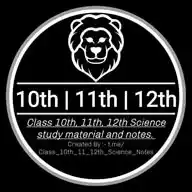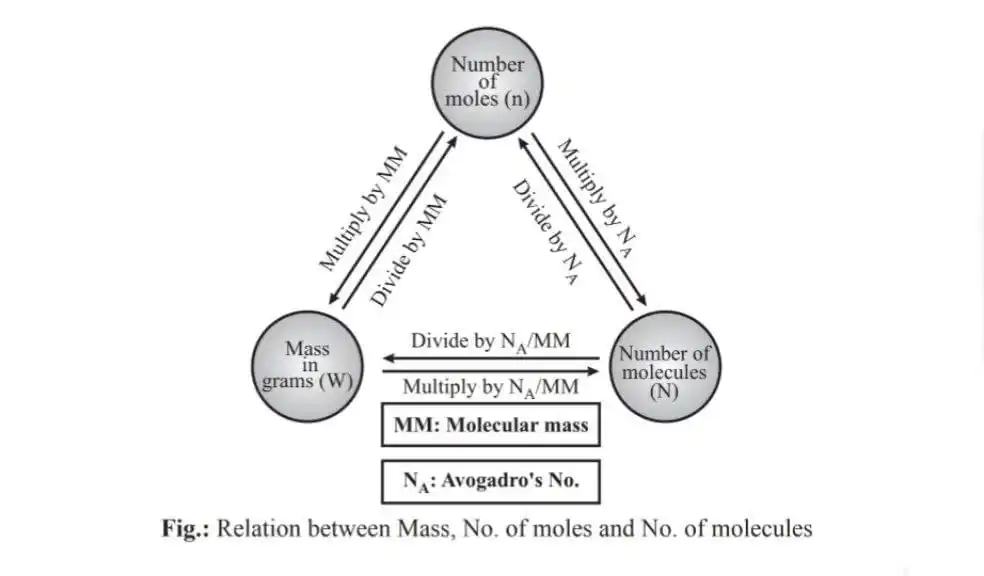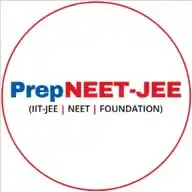
NEET JEE 11 12th Class Science Notes CBSE
12.8K subscribers
About NEET JEE 11 12th Class Science Notes CBSE
*advertisement Contact - wa.me/+919405051481* Here you get all Eductional Updates
Similar Channels
Swipe to see more
Posts

Fig. Neural tissue (Neuran with neuroglea) 𝗡𝗘𝗨𝗥𝗔𝗟 𝗧𝗜𝗦𝗦𝗨𝗘 ❖ The most complex tissue in the body composed of densely packed interconnected nerve cells called neurons (excitable cells and unit of neural system). ❖ Neural tissue exerts the greatest control over the body's responsiveness to changing conditions. ❖ The Neuroglial cell which constitute the rest of neural system protect and support neuron and make up more than 50% volume of neural tissue. ❖ It is specialised in communication between the various parts of the body and in integration of their activities. ❖ When a neuron is suitably stimulated, an electrical disturbance is generated which swiftly travels along its plasma membrane. ❖ Arrival of the disturbance at the neuron's endings or output zone, triggers events that may cause stimulation or inhibition of adjacent neurons and other cells. Join For More https://whatsapp.com/channel/0029Va9492L3QxRv5MtNFF0Y/151

MORPHOLOGY ►► The skin is smooth and slippery due to the presence of mucus. The skin is always maintained in a moist condition. ►► The color of dorsal side of body is generally olive green with dark irregular spots. On the ventral side, the skin is uniformly pale yellow ►► The frog never drinks water but absorbs it through the skin. ►► Body of a frog is divisible into its head and trunk. A neck and tail are absent ►▸ Above the mouth, a pair of nostrils is present. Eyes are bulged and covered by a nictitating membrane that protects them while in water. ►►On either side of the eyes, a membranous tympanum (ear) receives sound signals. ►►The forelimbs and hind limbs help in swimming, walking, leaping and burrowing. Join For More https://whatsapp.com/channel/0029Va9492L3QxRv5MtNFF0Y/151 ►►The hind limbs end in five digits and they are larger and muscular than forelimbs that end in four digits. Feet have webbed digits that help in swimming.

✅Chemistry In Everyday life 🌟 Histamine,stimulates the secretion of pepsin. 🌟 Histamine is a potent vasodilator . lt contracts the smooth muscles in the bronchi. 🌟 Synthetic drugs brompheniramina ( Dimetapp) & terfenadine ( Seldane), act as antihistamines. 🌟 Antiallergic & antacid drugs work on different receptors. 🌟 Tranquilizer & analgesics are neurologically active drugs. 🌟 Noradrenaline plays a role in mood changes. 🌟 Chlordiazepoxide & meprobamate,are sutable for relieving tension. 🌟 Equanil is used in controlling depression & hypertension. 🌟 Barbiturates are hypnotic. 🌟 Analgesics reduce or abolish pain. 🌟 Aspirin & paracetamol are non - narcotic analgesics. 🌟 Aspirin inhibits the synthesis of prostaglandins. It use in prevention of heart attacks 🌟 Morphine is a narcotic analgesics. 🌟 The first effective anti bacterial agent prontosil. 🌟 Antibiotics have either cidal effect or a static effect on microbes. 🌟 Penicillin G has a narrow spectrum of. Ampicillin & Amoxicillin are synthetic modifications of penicillins. 🌟 In India, penicillin is manufactured at the Hindustan Antibiotics in Pimpri & in private sector industry. 🌟 Chloramphenicol, Vancomycin. & Ofloxacin are a broad spectrum antibiotics. 🌟 Antiseptics ( either kill or prevent the growth of microorganisms). 🌟 Dettol is a mixture of chloroxylenol & terpineol. 🌟 Iodine is a powerful antiseptic. 🌟 0.2% solution of phenol is an antiseptic while it's 1% solution is disinfectant. 🌟 Norethindrone is an synthetic progesterone derivative drug. 🌟 The estrogen derivative drug is ethynylestradiol. 🌟 Aspartame is the most successful artificial sweeteners. 🌟 Alitame is high potency sweeteners, although it is more stable than aspartame. 🌟 Sucralose is trichloro derivative of sucrose.It does not provide calories. 🌟 The two most familiar antioxidants are butylated hydroxy toluene (BHT) & butylated hydroxy anisole(BHA). Join For more https://whatsapp.com/channel/0029Va9492L3QxRv5MtNFF0Y/151

Here’s a NEET Biology quiz with questions and answers explained: ### Question 1: Which of the following is not a part of the human respiratory system? a) Trachea b) Pharynx c) Alveoli d) Stomach Answer: d) Stomach Explanation: The respiratory system includes organs involved in breathing, such as the trachea, pharynx, and alveoli. The stomach is part of the digestive system, not the respiratory system. --- ### Question 2: Which part of the brain controls the balance and coordination of muscles? a) Cerebrum b) Cerebellum c) Medulla oblongata d) Thalamus Answer: b) Cerebellum Explanation: The cerebellum is responsible for regulating voluntary movements, including balance, coordination, and muscle tone. It works with the motor cortex to perform these functions. --- ### Question 3: Which of the following is a nitrogenous base found in RNA but not in DNA? a) Adenine b) Guanine c) Thymine d) Uracil Answer: d) Uracil Explanation: In RNA, the nitrogenous base uracil replaces thymine, which is found in DNA. Therefore, uracil is not present in DNA. --- ### Question 4: Which of the following is an example of a vestigial organ in humans? a) Appendix b) Heart c) Lungs d) Kidneys Answer: a) Appendix Explanation: The appendix is a vestigial organ in humans. It is a remnant of a structure that was functional in some of our ancestors but has little to no function in modern humans. --- ### Question 5: In the process of photosynthesis, which pigment is responsible for capturing light energy? a) Chlorophyll b) Carotenoids c) Xanthophyll d) Phycocyanin Answer: a) Chlorophyll Explanation: Chlorophyll is the primary pigment in plant cells that captures light energy during photosynthesis. It absorbs mainly blue and red wavelengths and reflects green, which is why plants appear green. --- ### Question 6: What is the primary function of the large intestine? a) Digestion of proteins b) Absorption of nutrients c) Absorption of water and salts d) Secretion of digestive enzymes Answer: c) Absorption of water and salts Explanation: The primary function of the large intestine is to absorb water, salts, and some vitamins from undigested food. It also compacts the waste into feces. --- ### Question 7: Which of the following is not a function of the lymphatic system? a) Transport of lymph b) Production of red blood cells c) Immune response d) Absorption of fats Answer: b) Production of red blood cells Explanation: The production of red blood cells occurs in the bone marrow, not in the lymphatic system. The lymphatic system is responsible for transporting lymph, immune responses, and absorbing fats. --- ### Question 8: In which part of the plant does photosynthesis primarily occur? a) Roots b) Stem c) Leaves d) Flowers Answer: c) Leaves Explanation: Photosynthesis occurs mainly in the leaves of the plant. The leaves contain chloroplasts with chlorophyll, which capture light energy to convert carbon dioxide and water into glucose and oxygen. --- ### Question 9: Which of the following is the main function of hemoglobin in red blood cells? a) Transport of oxygen b) Storage of nutrients c) Digestion of food d) Fighting infections Answer: a) Transport of oxygen Explanation: Hemoglobin is a protein found in red blood cells that binds to oxygen in the lungs and carries it to tissues and organs throughout the body. It also helps in transporting carbon dioxide back to the lungs. --- ### Question 10: Which of the following hormones is produced by the pancreas to regulate blood sugar levels? a) Insulin b) Thyroxine c) Adrenaline d) Estrogen Answer: a) Insulin Explanation: Insulin is produced by the pancreas and helps regulate blood sugar levels by facilitating the uptake of glucose into cells, reducing blood sugar levels. ---joi for more https://whatsapp.com/channel/0029Va9492L3QxRv5MtNFF0Y/151

💈Tissues💈 Tissues are categorized as − Plant Tissue Animal Tissue ♦️Plant Tissue Following are the major types of plant tissue − ➖Meristematic Tissues ➖Permanent Tissues ▪️Simple Permanent Tissues ➖Parenchyma ➖Collenchyma ➖Sclerenchyma ➖Epidermis ▪️Complex Permanent Tissue ➖Xylem ➖Phloem ▪️Meristematic Tissue ➖Meristematic tissue mainly consists of actively dividing cells, and helps in increasing the length and thickening the stems of the plant. ➖Meristematic tissue, commonly, present in the primary growth regions of a plant, for example, in the tips of stems or roots. ➖Depending on the region (where the meristematic tissues are found); meristematic tissues are classified as apical, lateral, and intercalary (see the image given below). ➖Apical meristem (as shown in the above image) is present at the growing tips of stems and roots and helps in their growth. ➖Lateral Meristem is found in stem or root region and helps in their growth. ➖Intercalary meristem is found at the base of the leaves or internodes (on twigs) and helps in growth. 🔸Permanent Tissue Cells of meristematic tissue later differentiate to form different types of permanent tissue. Permanent Tissue is further categorized as − ➖Simple Permanent Tissue and ➖Complex Permanent Tissue 🔸Simple Permanent Tissue Simple Permanent Tissue further categorized as − ➖Parenchyma ➖Collenchyma ➖Sclerenchyma ➖Epidermis 🔸Parenchyma tissue provides support to plants and also stores food. 🔸Sometimes, parenchyma tissue contains chlorophyll and performs photosynthesis, in such a condition, it is known as collenchyma. 🔸The collenchyma tissue provides flexibility to plant and also provides mechanical support (to plant). 🔸The large air cavities, which are present in parenchyma of aquatic plants, give buoyancy to the plants and also help them float, are known as aerenchyma. 🔸The Sclerenchyma tissue makes the plant hard and stiff. For example, the husk of a coconut is made up of sclerenchymatous tissue. 🔸The cells of Sclerenchyma tissue normally are dead. 🔸The outermost layer of cells is known as epidermis. 🔸The epidermis is usually made up of a single layer of cells. 🔸The entire surface of a plant has the outer covering of epidermis, which protects all the parts of the plant. 🔷Complex Permanent Tissue The complex tissue, normally, consists of more than one type of cells which work together as a unit. Complex tissues help in the transportation by carrying organic material, water, and minerals up and down in the plants. 🔸Complex Permanent Tissue is categorized as; ➖Xylem ➖Phloem 🔸Xylem, normally, consists of tracheid, vessels, xylem parenchyma, and xylem fibers. 🔸Xylem is accountable for the conduction of water and mineral ions/salt. 🔸Phloem, normally, is made up of four types of elements namely − ➖Sieve tubes ➖Companion cells ➖Phloem fibers and ➖Phloem parenchyma 🔸Phloem tissue transports food from leaves to other parts of the plant. Join For More https://whatsapp.com/channel/0029Va9492L3QxRv5MtNFF0Y/151

Fig.: Relation between Mass, No. of moles and No. of molecules --------------------------------------------------------- Interpretation of balanced chemical equations: Once we get a balanced chemical equation then we can interpret a chemical equation by following ways: ✅ ✿ Mass - mass analysis ✿ Mass - volume analysis ✿ Mole - mole analysis Join For More https://whatsapp.com/channel/0029Va9492L3QxRv5MtNFF0Y/151


𝐅𝐔𝐍𝐂𝐓𝐈𝐎𝐍𝐒 𝐎𝐅 𝐋𝐎𝐍𝐆 𝐁𝐎𝐍𝐄 ➩ The functions of long bones in the human body include the following: ➩ They provide movement and structure to the upper and lower extremities. ➩ They interact with tendons and muscles to allow limb movement. ➩ They act as levers to provide them with the most effective use of their muscles, including lifting objects and fast movement. ➩ Like all other bones, they are the storage and reservoirs of minerals like calcium, sodium, phosphorus, and magnesium, essential for regulating various physiological activities. ➩ The bone marrow of long bones can manufacture blood cells, i.e., red blood cells, white blood cells, and platelets. Join For More https://whatsapp.com/channel/0029Va9492L3QxRv5MtNFF0Y/151

Fig.: Results of a dihybrid cross where the two parents differed in two pairs of contrasting traits: seed colour and seed shape Mendel wanted to observe the effect of one pair of heterozygous on other pair. So, he selected traits for dihybrid cross for his experiment as follows: (i) Colour of cotyledons→ Yellow (Y) and Green (y) (ii) Seed shape Round (R) and Wrinkled (r) ▸► Yellow and round characters are dominant and green and wrinkled are recessive characters. ▸► All the plants of the F₁ generation were yellow and round seeds (YyRr). ▸► The factors of both characters will have independently segregated to each other during gamete formation. Thus total four types of gametes (YR), (yR), (Yr), (yr) form in F, generation. ▸► On selfing of F, the resultant F, generation show four types of plants, i.e., Yellow Round, Yellow wrinkled, Green Round, Green wrinkled ▸► The punnett square given in the diagram can be effectively used to understand the independent segregation of the two pairs of genes during meiosis Join For More https://whatsapp.com/channel/0029Va9492L3QxRv5MtNFF0Y/151

►An Rh-ve person, if exposed to Rh+ve blood, will form specific antibodies against the Rh antigens. ► Rh incompatibility observed between the Rh-ve blood of a pregnant mother with Rh+ve blood of the foetus. ► Rh antigens of the foetus do not get exposed to the Rh-ve blood of the mother in the first pregnancy as the two bloods are well separated by the placenta. ▸ During the delivery of the first child, there is a possibility of exposure of the maternal blood to small amounts of the Rh+ve blood from the foetus. ► In such cases, the mother starts preparing antibodies against Rh antigen in her blood. ► In case of her subsequent pregnancies, the Rh antibodies from the mother (Rh-ve) can leak into the blood of the foetus (Rh+ve) and destroy the foetal RBCs. Join For More https://whatsapp.com/channel/0029Va9492L3QxRv5MtNFF0Y/151

36 most important name reactions in NEET 2024 01. Gattermann Reaction 02. Balz-Schiemann Reaction 03. Wurtz Reaction 04. Birch Reduction 05. Wurtz-Fittig Reaction 07. Fittig Reaction. 08. Ullmann reaction 09. Iodoform Reaction 10. Swarts Reaction 11. Kolbe’s Reaction 12. Reimer-Tiemann Reaction 13. Dows Process 14. Aldol Condensation. 15. Cross-Aldol 16. Cannizzaro’s Reaction 17. Clemmensen Reduction 18. Wolff-kishner reduction 19. Friedel Craft Reaction 20. Beckmann Rearrangement 21. Gabriel Phthalimide Synthesis 22. Hoffmann Bromamide Reaction 23. HVZ Reaction 24. Pinacol-Pinacolone Rearrangement 25. Fischer Esterification 26. Ozonolysis 27. Hofmann Elimination 28. Stephen Reduction 29. Rosenmund Reduction. 30. Finkelstein Reaction. 31. Etard Reaction. 32. Carbylamine Reaction 33. Coupling Reaction 34. Diazotization Reaction 35. Decarboxylation Reaction 36. Gatterman-Koch Reaction Join For More https://whatsapp.com/channel/0029Va9492L3QxRv5MtNFF0Y/151














